Ancient Egypt has a significant cultural impact on ancient and modern civilizations with its extensive collection of antiquities, inventions, and monuments.
Inventions from ancient Egypt molded the world to its current form. The technologies and innovations vary from essential equipment to complex construction projects, mathematics, geometry, astronomy, medicine, and literature that formed religions.
They gave the gigantic pyramids as the world’s seven wonders, the beauty of Cleopatra, and many more glorious monuments.
Egyptian women flaunted their wigs, pieces of jewelry, and clothes, men boxed and played sports, and children with dolls, toys, and board games.
Here this article will discuss 10 Egyptian inventions that left an impact until today.
What ancient Egyptian inventions do we still use today?
Content
Toothpaste, paper, ink, cosmetics, and even breath mints were invented in ancient Egypt.
These are some basic things that we still use in our day-to-day life.
What did the ancient Egyptians use for medicine?
Ancient Egyptians believed that religion and supernatural forces played a significant role in the health and well-being of people.
However, they included scientific methods along with these beliefs.
They used charms, incantations, and medicines made of natural ingredients such as honey, juniper, thyme, etc.
What contributions did ancient Egypt make in the sector of beauty?
Egyptians made makeup from natural pigments and made kohl for eye makeup.
They also invented the concept of wigs made out of either vegetable fibers or human hair.
10. Egyptian invention of Ink and PaperPaper and ink
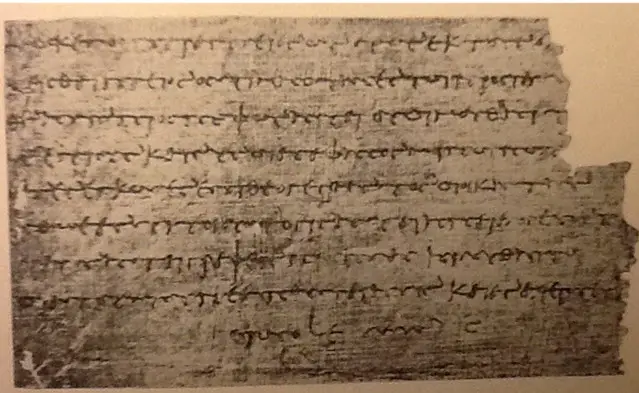
Although the Chinese invented paper, Egyptians were a step ahead with creating a substitute from the plant of the papyrus. They named the creation papyrus, now commonly known as paper.
The papyrus plant’s rigid, fibrous material was suitable for writing materials that could last longer. They also used it to make sails, sandals, and mats.
The manufacturing process of the papyrus was kept a secret so they could trade the sheets of papyrus all over the region.
The Mesopotamians inscribed the alphabets into wax, clay, or stone; however, the Egyptians developed a less tiring ink method.
9. Development of the Written Language
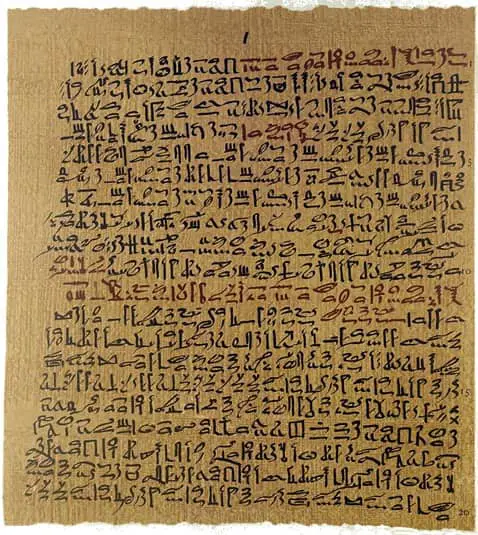
An image of Egyptian Papyrus with Egyptian script
Ancient Mesopotamians and Egyptians were among the first to develop the regularly used language and expressions into an organized written form. Before that, they used pictograms, a straightforward portrayal of the words.
Eventually, Egyptians developed a writing system consisting of alphabets, syllables, and ideograms. They were found inscribed on the Egyptian tombs with stories of culture, tradition, war, politics, and other incidents of interest.
The writings and inscriptions could be interpreted with the Egyptian Rosetta stone. Similarly, the decode of the stone by a famous French scholar, Jean-Francois Champollion.
The writings of Ancient Egypt were a hidden mystery until then.
8. The lock
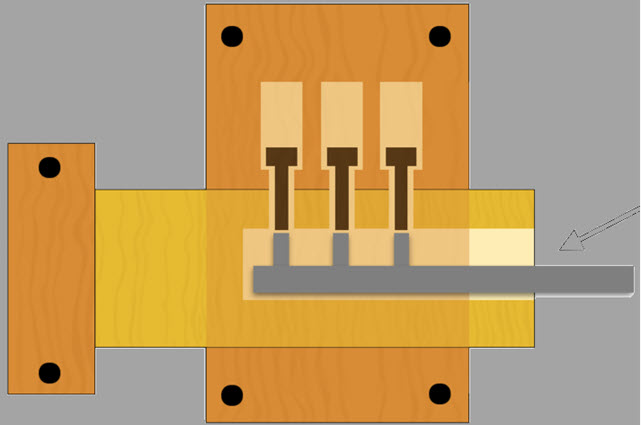
Initially, the houses in ancient Egypt were protected by a simple bolt across the door. They invented the lock and key around the 2nd millennium BC, which became the new security system.
The Egyptian tumbler lock had several pins forming mini bolts inside, and on inserting the matching key, the prongs lifted, allowing the bolt to be pulled back, opening the door. Some early keys were as large as two feet and made of wood.
The locks were mainly used for the protection of rooms and possessions of the wealthy. They have been found inside the great pyramids serving as the toms of the rulers.
Egyptian locks were more secure than the ones developed by the Romans. The Romans had a more straightforward design consisting of spring instead of a bolt to hold the door in place.
7. The calendar
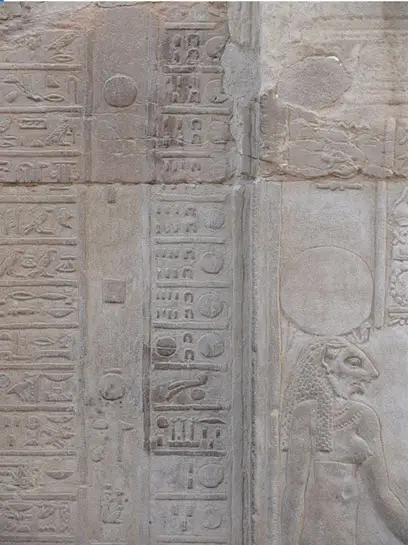
Based on the Sun and Moon, the Ancient Egyptians divided their calendar into 12 months, each month having 30 days. It consisted of additional 5 special days making 365 the total days of a year.
The five days were dedicated to honor the god’s children and were announced as the religious holidays for the entire Egyptian Empire. This method has been recognized and used for timekeeping to date.
The Egyptians, however, were only familiar with the 3 seasons used by the farmers to know the timing of sowing and reaping the seeds. The seasons were: inundation, growing, and harvest. Each season consisted of four months.
Similarly, they invented the 1st timekeeping device—the earliest known sundial dated back to 1500 BC.
6. Barbers
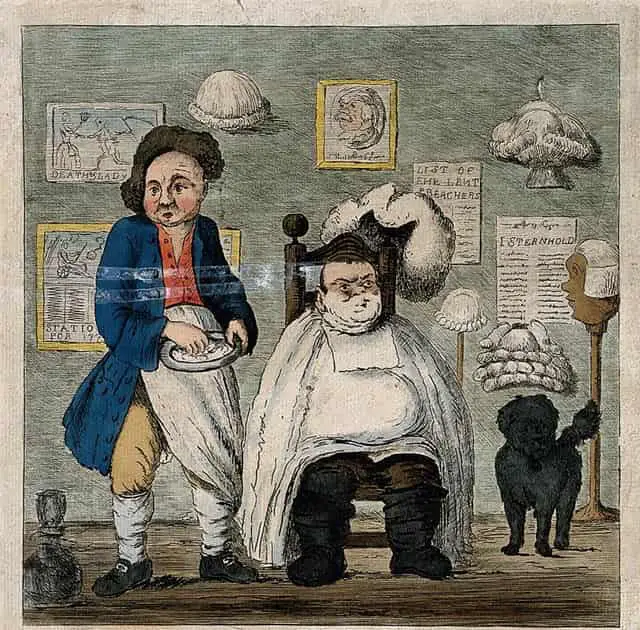
The first barbers found in Egypt dated back to 5000 BC. Men were employed to cut and groom the hair and beard with the help of sharpened flints and shells.
The trends back then, as of now, sometimes stated clean-shaved appearance as fashionable, while at other times, long hair and beards were considered fashion.
Priests or doctors carried out some barbering as it had ritual or medicinal purposes. Barbers were considered skillful men even after the task was professionalized.
Just like a butler, the elites had their live-in barbers or had one make house calls. Ordinary citizens had to visit the city’s street barbers to get a haircut.
The Egyptians made fake beards and wigs from the wool of sheep and were predominantly used by their Queens and Kings. The shapes and sizes of the beard differed based on the person wearing it.
For instance, the beards were made in small sizes for regular citizens, while Kings preferred to attach artificial whiskers to their beard and made it look longer but with a square tip.
5. Makeup and wigs
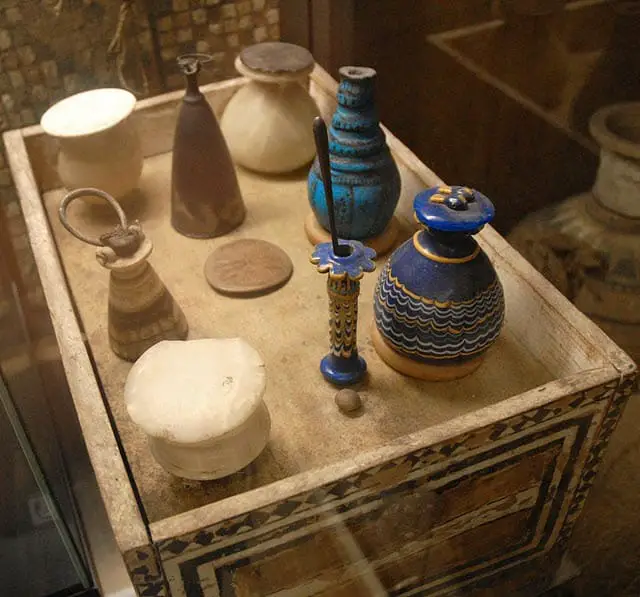
The Egyptians took a step further regarding beauty by designing various rituals and products to emphasize a woman’s look. They made makeup from natural pigments such as crushed beetles and toxic lead to augment their facial features.
The eye make-up was first invented around 4000 BC when they first made the mixture of soot and galena ( a mineral ), creating kohl ( a black ointment).
After which, they made different colored eye make-up, starting with green. Like kohl, it was made by mixing two minerals, malachite and galena, to give a variety of colors to the combination.
Moreover, wigs were trendy among Egyptian women, and the most common wigs were made using fibers – mainly extracted from vegetables. The royal family members, however, preferred to put on wigs made out of natural human hair.
Nubian people especially made them boosted the Afro style, which was very popular during the second millennium.
Egyptians used to shave their heads to keep them clean and prevent lice during the hot summers. Priests remained bald as a part of their purification rituals.
However, the people who could afford it had wigs made for themselves in different styles and set with perfumed beeswax.
4. Bowling
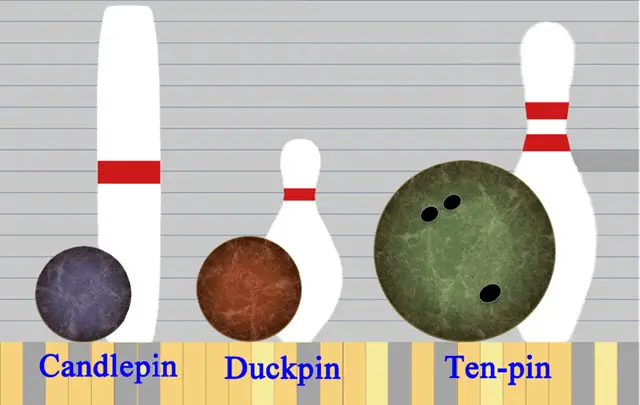
An image of bowling invented in Ancient Egypt
A British archeologist William Mathew Flinders Petrie dug up almost three thousand graves throughout Egypt. He discovered skittle’s set in a tomb dated 5200 BC among many children’s graves.
It contained a couple of balls and nine stones shaped like vases.
Initially, archeologists thought them ornaments but later realized they were the earliest evidence of bowling. The game was simple, involving a ball at a set of stationary objects at a distance.
The balls were made of husks of corn, covered in leather, and bound with string. However, they were also made using stone or porcelain.
Other civilizations, including the Romans, later adopted this form, and it is now made out as one of the most popular games.
Playing bowling in Ancient Egypt was different than the process applied now. The main target was to hit the hole made in the middle of the bowling lane.
The competitors took the two sides and tried to place the bowl in the hole from both ends.
3. Toothpaste and Breath Mints

Toothpaste was another prominent invention of the Egyptians. It was made for hygiene purposes by mixing and grinding a variety of salts, pepper, ashes, eggshells, and dried flowers. The rough paste was rubbed in their teeth using their fingers or some old twig toothbrush.
Though this invention helped clean the teeth, the complex texture made the gums bleed and wore out the enamel.
The Egyptians invented breath mints after toothpaste. It was mainly for the people facing the problems of tooth decay. Adding mint to the toothpaste helped eradicate the problem of bad breath.
Likewise, they also put a few drops of honey mixed with fragranced herbs like myrrh, cinnamon, and frankincense to avoid an unpleasant smell and rotting teeth.
2. The plow
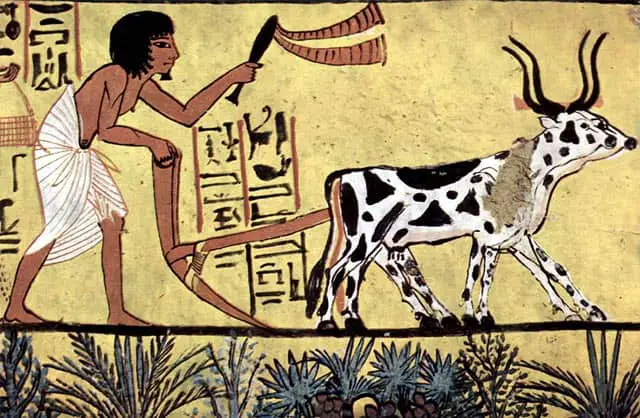
Egyptians developed the use of the plow around 4000 BC. The plow was initially very light, hence not being very effective. The plow is now termed a scratch plow for being able to dig deep down the ground level.
In 2000 BC, the ineffectiveness of the plow changed with the change in how it was used. The Egyptians began using the plow by hooking them to oxen instead of using it directly with their hands.
Initially, the plow was designed to be tied with the horns, leading to animal breathing issues. This problem resulted in improving the design by adding straps.
The Plow proved to be one of the most prominent inventions for the Egyptians as the plow, along with the water from the Nile River, made farming effective and efficient for the Egyptians.
1. Medicines

The divine and the supernatural played a massive role in understanding the Egyptian people’s health. However, the Egyptians combined this with a scientific touch and cured sickness.
They used natural resources, animal products, and minerals to make medicines. By 2200 BC, the doctors and priests combined practiced medicine at various institutions termed Houses of Life.
Similarly, they were the first ones to create a public health system with numerous laborers, artisans, and workers getting food supply and wages.
Conclusion
The Egyptians had a vibrant culture, great pyramids, and discoveries that helped shape the present world and its daily activities.
From outing on makeup to locking our doors, ancient Egypt had directly impacted many essential things in our lives today.
We have embodied various things, including literature, language, mathematics, and architecture, and still use their inventions such as locks, makeup, wigs, medicine, and many more.
